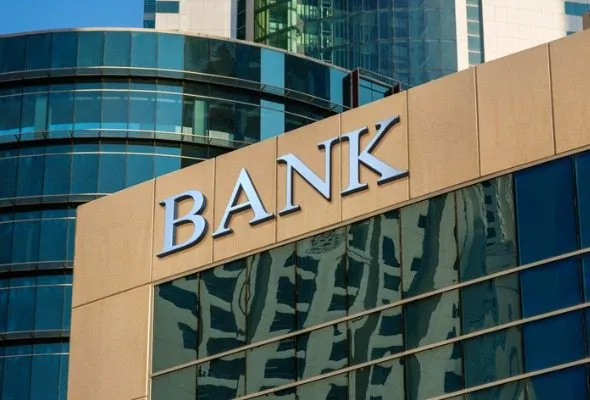Finding a good deal on a checking or savings account is becoming more difficult with banks charging higher fees. Over the last few years, online banking has become a popular alternative to brick-and-mortar banks, but it’s not right for everyone. If you’re thinking about moving your accounts, there are a few things you need to keep in mind. Here’s a breakdown of the pros and cons of trading in your traditional bank for a virtual banking experience. Consider working with a financial advisor as you sort through all your options for banking.
What Actually Is a Bank?
A bank is a financial institution licensed to accept deposits, lend money and offer various related services.These can include:
It may also give loans for various purposes, such as the purchase of a home or vehicle. It could also be for a business-related matter, such as buying or growing a company. Some banks also offer credit and debit cards, in addition to providing financial advice, wealth management and trust services.
One way to categorize banks is by whether or not they have a physical presence for customers. Those that do are known as traditional banks. Other banks have no physical presence for customers and are called online banks.
A number of banks are a hybrid, especially large financial institutions like Bank of America. They offer both an online and a brick-and-mortar presence for customers.
What Are the Benefits of Online Banks?
The rise of virtual banking stems from a convergence of factors. Here are four common factors.
Higher Interest Rates
One of the typical advantages of online banking is a bump in interest rates for checking, savings, money market and CD accounts. In fact, many online banks have significantly higher rates than their traditional, branch-based counterparts.
The rates offered by some of the best online savings accounts can add up in the long run, especially if you’re keeping a lot of cash in your account.
Fewer Fees
Another benefit of doing your banking online is that you may be able to save more on fees. With a traditional bank, you may be on the hook for a wide range of bank fees. Because online banks tend to have lower operating costs, you typically won’t have to shell out as much for all these little charges.
Some online banks will also cover ATM fees, regardless of where you make withdrawals. Just be sure to read the fine print since you may only get credit for a certain number of transactions each month.
Convenience
The great thing about online banks is that they’re always open which means you can access your accounts any time and from anywhere. You can set up automatic transfers, schedule bill payments or check your balance using mobile banking apps. Some online banks even allow you to set up mobile text alerts to help you keep track of payments or notify you if your balance is getting low.
While many traditional banks offer these same services, they’re not available everywhere. This can be a hassle if you need to bank on the go.
Security
A common myth about virtual banking is that it is not as safe as traditional banking. In reality, online banking does not necessarily increase the risk of your personal information or money being stolen. Online banks take the same security measures as other banks to protect your data, including using encrypted websites and multi-factor authentication. As long as you choose a bank that is insured by the FDIC, you are covered for losses up to $250,000.
What Are the Downsides of Online Banks?
While the advantages of virtual banking are compelling, there are several reasons to be cautious before you make a switch. Here are three of those reasons.
Deposits Can Be a Hassle
Without a physical location, adding money to your account can be a challenge. Depending on which bank you choose, you may be able to mail deposits in, make wire transfers or make electronic deposits with a smartphone. But, if you prefer handing your check over to an actual person for deposit, online banking may not be the best choice.
Less Personalized Service
One of the benefits about traditional banking is that it gives you the opportunity to build a personal relationship with the teller handling your cash. With an online bank, customer service is typically handled over the phone or online which means you don’t get that face-to-face interaction.
If you prefer to handle problems with your account with someone who knows your financial background and banking history, you may be better off sticking with your local bank.
Technological Challenges
Online banks design their websites to make navigation as easy as possible for their customers but it can take some time to adjust if you’re not used to virtual banking. If your bank decides to upgrade their site or redesign the format, you may find yourself back at square one the next time you log in.
Online banking offers some definite advantages over traditional banking but it really comes down your comfort level. If you know your way around a computer and you won’t miss your local branch, it may be time to make the switch.
Cash Deposits
While online banks typically allow customers to digitally deposit checks, you cannot deposit or withdraw cash without access to an ATM. Traditional banks, on the other hand, accept and dispense cash.
What Are Traditional Banks?

The term “traditional banks” is used to describe a range of different bank types, including commercial banks, investment banks and cooperative banks as well as the familiar retail, brick-and-mortar bank. Distinctions among these types of banks are somewhat fluid, as banks can offer various services focused on retail and commercial customers (like professional investment companies or corporations). Sometimes the term traditional bank is also used to describe savings and loan associations and credit unions, although it is important to note that these two are not actually banks.
What Are the Benefits of Traditional Banks?
There several benefits to traditional banks, including the following four:
Simplicity
With a traditional bank, you do not have to be tech savvy. An online bank requires customers to have some kind of digital device like a smart phone or personal computer, but a traditional bank does not. A traditional bank customer can simply walk into a storefront and speak with a banker about what is needed.
Personal Service
Traditional bank customers can easily discuss their goals or problems with an actual human. It is an attractive bonus for customers who find the chat feature of online banking confusing or irritating. These customers may find it reassuring to know specific bankers by name, and they appreciate being known by their first name. Such aspects of a traditional bank experience can reduce the stress that can accompany a financial transaction.
No-Cost Access to ATMs
Traditional banks, especially the large ones, can offer free use of ATMs in their network. Whether the bank’s network is large or not, many customers appreciate not having to pay an ATM bank fee – sometimes 2% or 3% of the amount withdrawn – every time they need small amounts of cash.
Community Ties
Traditional banks often have ties to the area they operate in. They typically support local nonprofits and schools, and their officers can often be found on the boards of area charities. Further, traditional banks sometimes share a history, occasionally stretching back to the 19th century, with the communities they serve. That enhances their customer-oriented-image.
What Are the Downsides of Traditional Banks?
The above-mentioned benefits come at a cost, including the following three benefits.
Low Interest Rates
Whether you are shopping for a savings account or a certificate of deposit, traditional banks generally do not offer rates that are as competitive as those of an online bank. It is not uncommon to find traditional savings accounts offering rates so low, they equal just nominal earnings.
More Fees
Given the expenses entailed in running a brick-and-mortar business, the benefits of traditional banks come at a higher cost in the form of more fees. Traditional banks often levy minimum balance fees, direct deposit fees, late fees, over-limit fees, check fees and debit card fees.
As with their low interest rates, these fees stem from the higher operating costs traditional banks incur.
Lack of Convenience
Whereas online bank customers can handle their financial affairs from any location with an internet signal and even when riding in a train or plane, customers of traditional banks – who lack an online presence – have to get to a specific physical address to conduct business.
Which One Should You Pick? Online vs. Traditional Banks
Your decision will ultimately depend on how you manage your money and which features matter most. If you prefer in-person service, need access to physical branches, or frequently deposit cash, a traditional bank may be a better fit. This setup can be helpful for individuals who value face-to-face customer service, small business owners handling cash, or those living near branch locations.
Online banks, on the other hand, tend to offer higher interest rates on savings accounts and lower overall fees. They work well for people who are comfortable managing their finances digitally, do not need branch access, and want to avoid common fees like maintenance charges or overdraft penalties. These accounts are often suited for younger adults, remote workers and those focused on earning more interest with fewer account-related costs.
Some individuals may benefit from using both. For example, you might keep an online savings account for higher interest and a traditional checking account for local access and cash handling. The right choice depends on your transaction habits, access needs, and whether digital tools or in-person support better match your banking preferences.
Bottom Line

There are many ways to distinguish banks, including retail, central, commercial, shadow and investment banks. Virtual or online banking is another such way, and it offers a less expensive, lower cost and more convenient alternative to traditional, brick-and-mortar banking. On the other hand, service is hardly personal, a certain level of digital proficiency is required and there are concerns about the security of personal financial information.
Tips on Finances
- A financial advisor can provide valuable insight and guidance as you decide on accounts for your financial plan. Finding a financial advisor doesn’t have to be hard. SmartAsset’s free tool matches you with vetted financial advisors who serve your area, and you can have a free introductory call with your advisor matches to decide which one you feel is right for you. If you’re ready to find an advisor who can help you achieve your financial goals, get started now.
- Use our simple savings calculator to see how quickly your savings will grow in a bank savings account.
Photo credits: ©iStock.com/ultramarine5, ©iStock.com/shapecharge, ©iStock.com/simonkr
